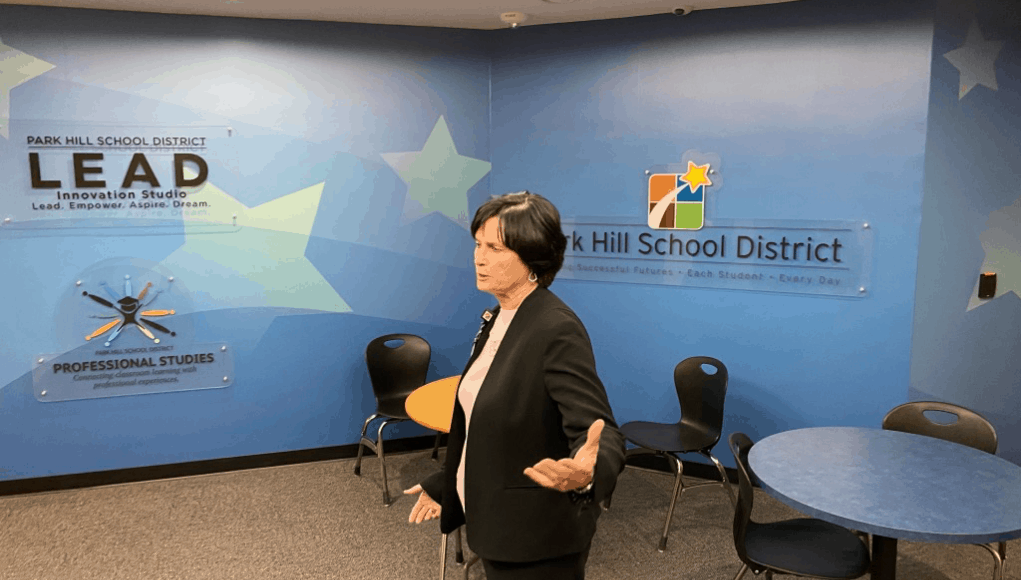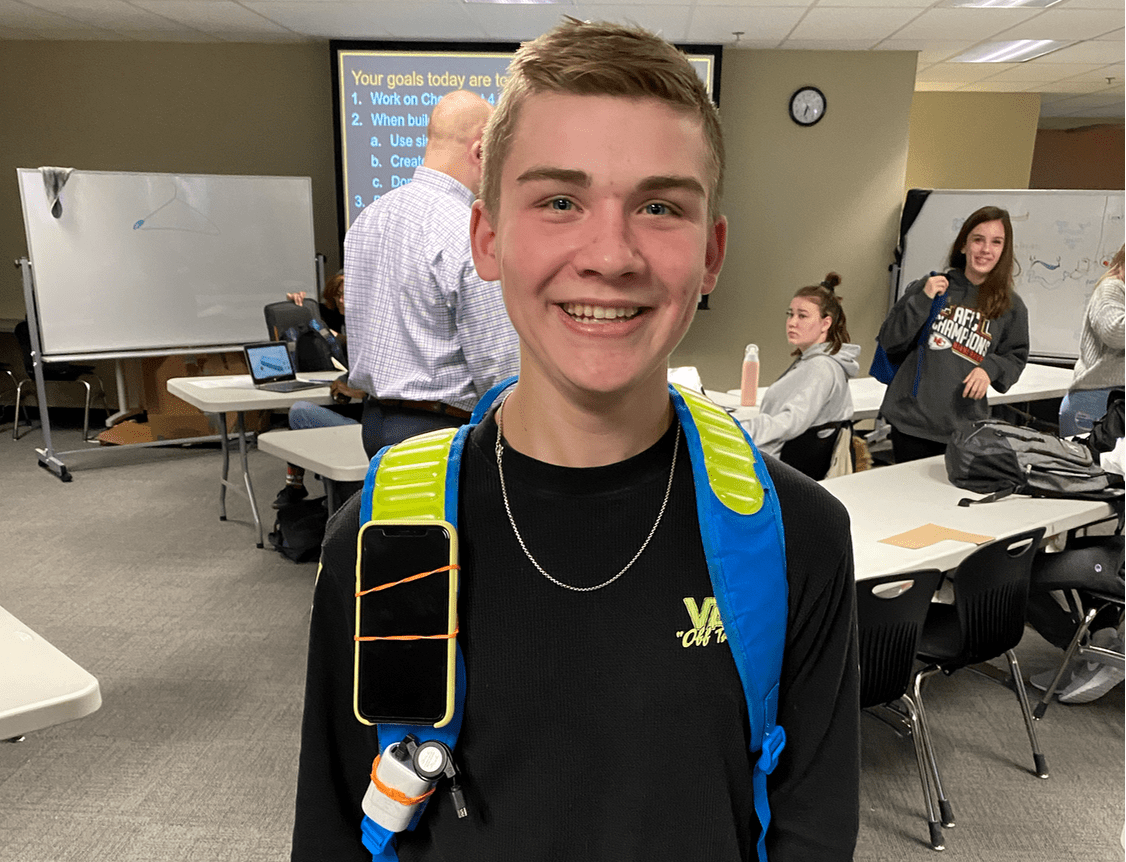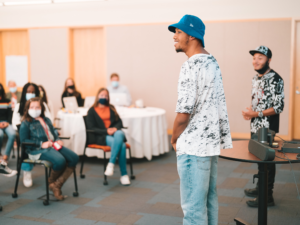Where High School Starts with Leadership and Design Thinking

Imagine a high school that started with design thinking and leadership training. Imagine having the opportunity to prototype a solution to a community problem and earn a provisional patent.
Student Maliyah Wampler enrolled in LEAD Innovation Studio, a new high school program, “to get ahead.” She liked the focus on leadership and service. She looked forward to developing her coding and engineering skills. As the oldest of seven children, she wanted to get a head start on college.
In her freshman design thinking class, Wampler was challenged to create a product that solved a real-world problem. Worried about the walking safety of her siblings, she designed a wireless device that triggers an alarm and sends the location to emergency services. She presented it to local police and received positive feedback, which ignited additional work. She applied for and received a provisional patent for the device. As a sophomore, she has met with manufacturers and continues to work on a prototype.
Jackson (below) is a freshman prototyping a rechargeable backpack that will power his devices.

LEAD Backstory
When you land in Kansas City, you’re in the Park Hill School District, a growing suburb on the Missouri side of the river.
As the district grew toward 4,000 high school students, Superintendent Dr. Jeanette Cowherd knew she’d need more capacity. She led community conversations comparing the merits of three options: ‘supersizing’ the two existing high schools, moving to split-shift high school schedules, or opening a program in a different facility. The community preferred option three, but without much time or $100 million in the capital account, Dr. Cowherd decided to rent an office building and open the program one grade-level cohort at a time, starting with incoming ninth grade students.
She gave Dr. Jaime Dial, Director of Secondary Education, room to innovate but with two provisions: the school had to continue Park Hill’s top academic performance and it needed to be open to all students in Park Hill.
Dial and the rest of the design team went on visits to next-generation schools including Iowa BIG, New Tech Network, and Summit Public Schools. They selected the Summit Learning platform to support personalized learning, and using principles learned while visiting Iowa BIG and New Tech Network schools, are adding larger, integrated, community-connected projects.
In 2017, LEAD (@ParkHillLEAD) enrolled 150 freshmen. In 2018, they added another 150 freshman students to expand the program to ninth and tenth grade students. They have added juniors this year to expand to a ninth through eleventh grade program; next year, in their new facility, LEAD will serve 625 students in grades nine through 12.
In addition to design thinking, freshmen take a class on leadership. They develop personal leadership skills and learn impact strategies. They study how nonprofit organizations support the community. Some students volunteer, while others launch awareness campaigns.
Starting with leadership builds self-knowledge, agency, and project management skills. Beginning with design thinking gives LEAD students the confidence to step into complex problems and know where to start. Teacher Nicki Scott said, “Most kids are never asked what they really care about.”
LEAD students spend 60 minutes per day with their mentors in small advisory groups of 15 to 18 students. They plan and set goals and work on success skills. The goal is to help students graduate with curiosity, self-direction, and purpose.
A mastery-based approach means students demonstrate important skills before moving on, ensuring a strong academic foundation for advanced studies.
Sydney Hamilton is a junior at LEAD and serves on the school’s Executive Council. Her experience has helped her decide to become a pilot. Through the Professional Studies program, she’s doing an internship at the airport this year.
This fall, LEAD will move out of its incubation space in a rented office building into a new facility with lots of flexibility, including room for individual work, small groups, and large groups.
The development of LEAD is a good example of a district carefully monitoring population growth, holding proactive community conversations, using enrollment growth to launch a new school in a flexible commercial office setting, and using the opportunity to pilot and demonstrate a new learning model.
The combination of personalized and project-based learning is compelling, but the most important innovation at LEAD is the foundation of leadership and design thinking skills that freshmen receive—it sets them up for success and creates an opportunity-focused culture.
For more, see:
- Diane Tavenner on What Kids Need for a Fulfilled Life
- Pamela Cantor, M.D. on Childhood Development
- Diploma Networks: A New Way to Help Schools Adopt Broader Outcomes and Next-Gen Learning Models
Stay in-the-know with innovations in learning by signing up for the weekly Smart Update.
This post was originally published on Forbes.








0 Comments
Leave a Comment
Your email address will not be published. All fields are required.